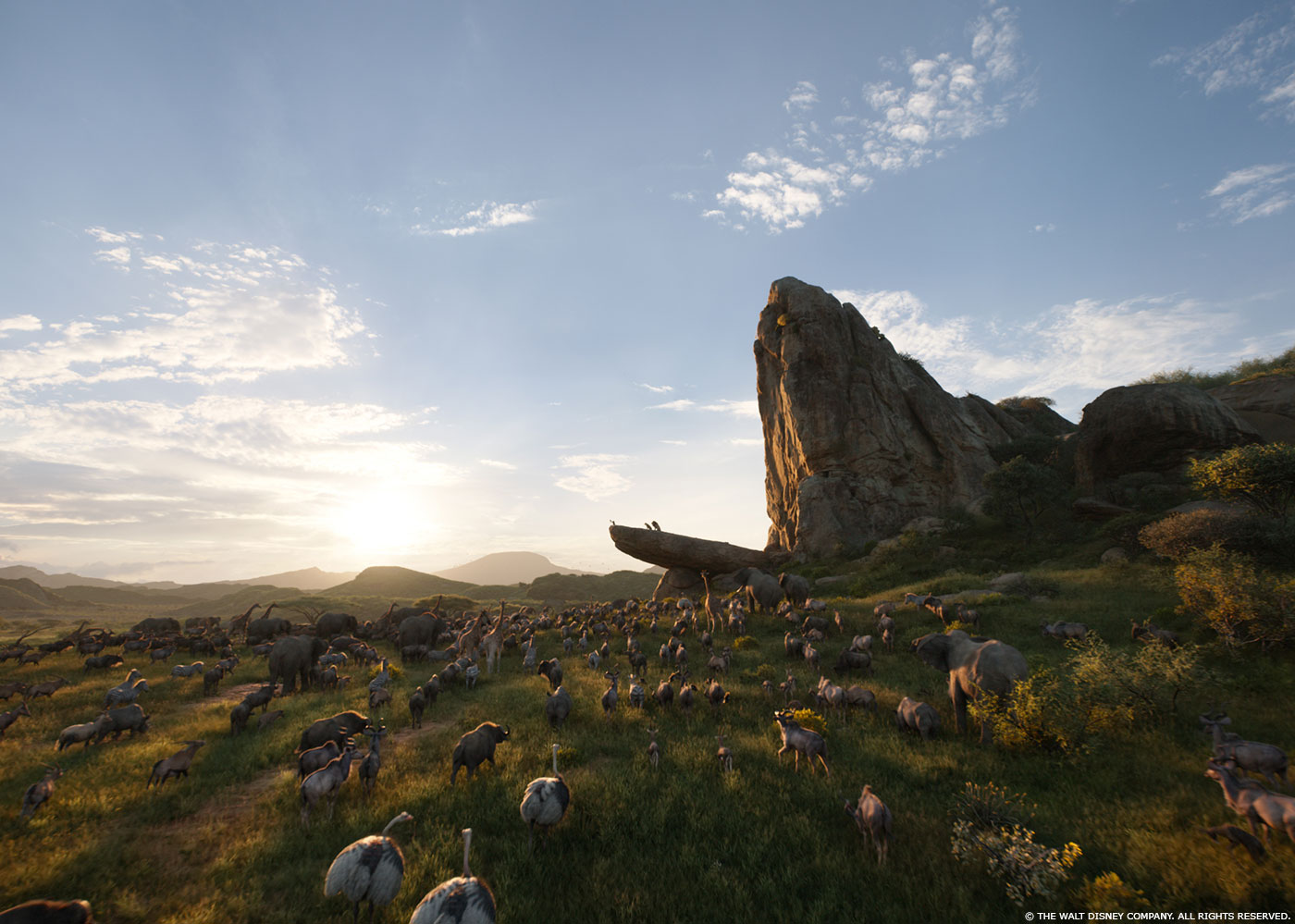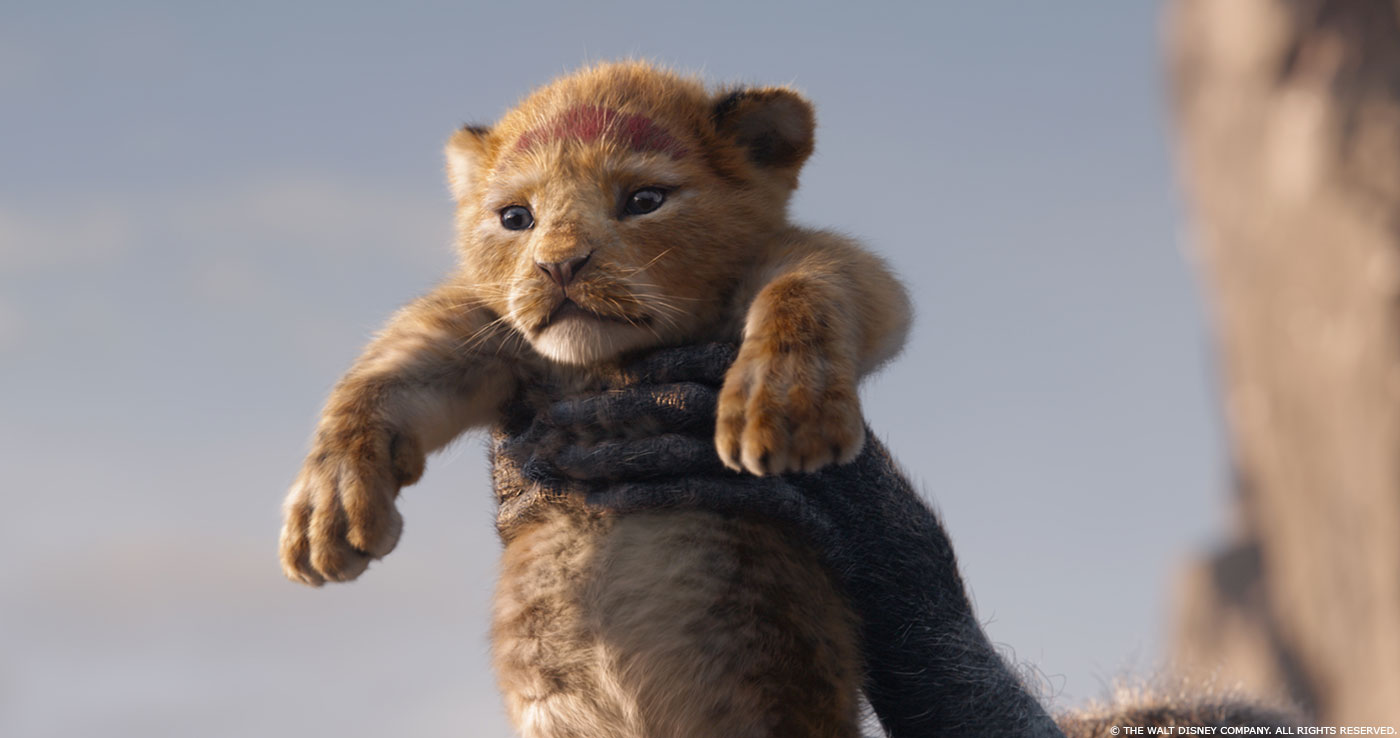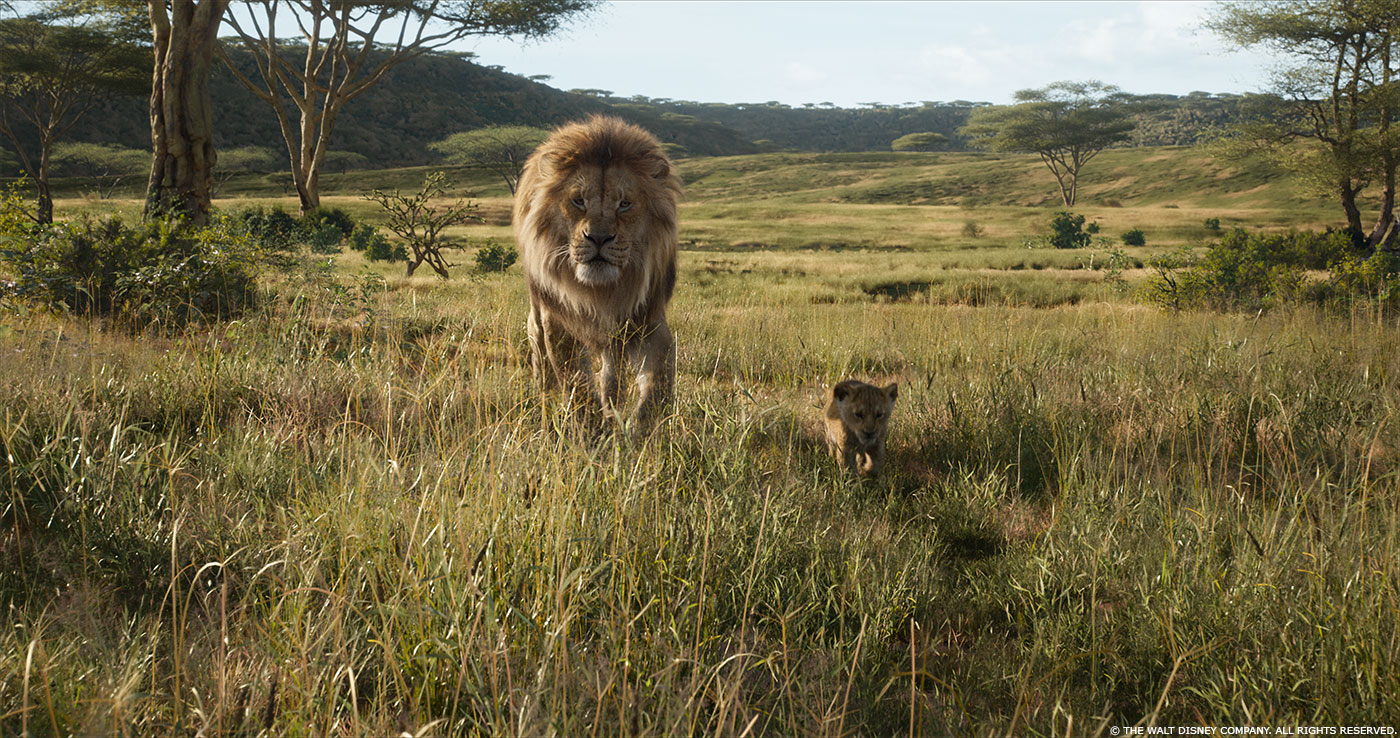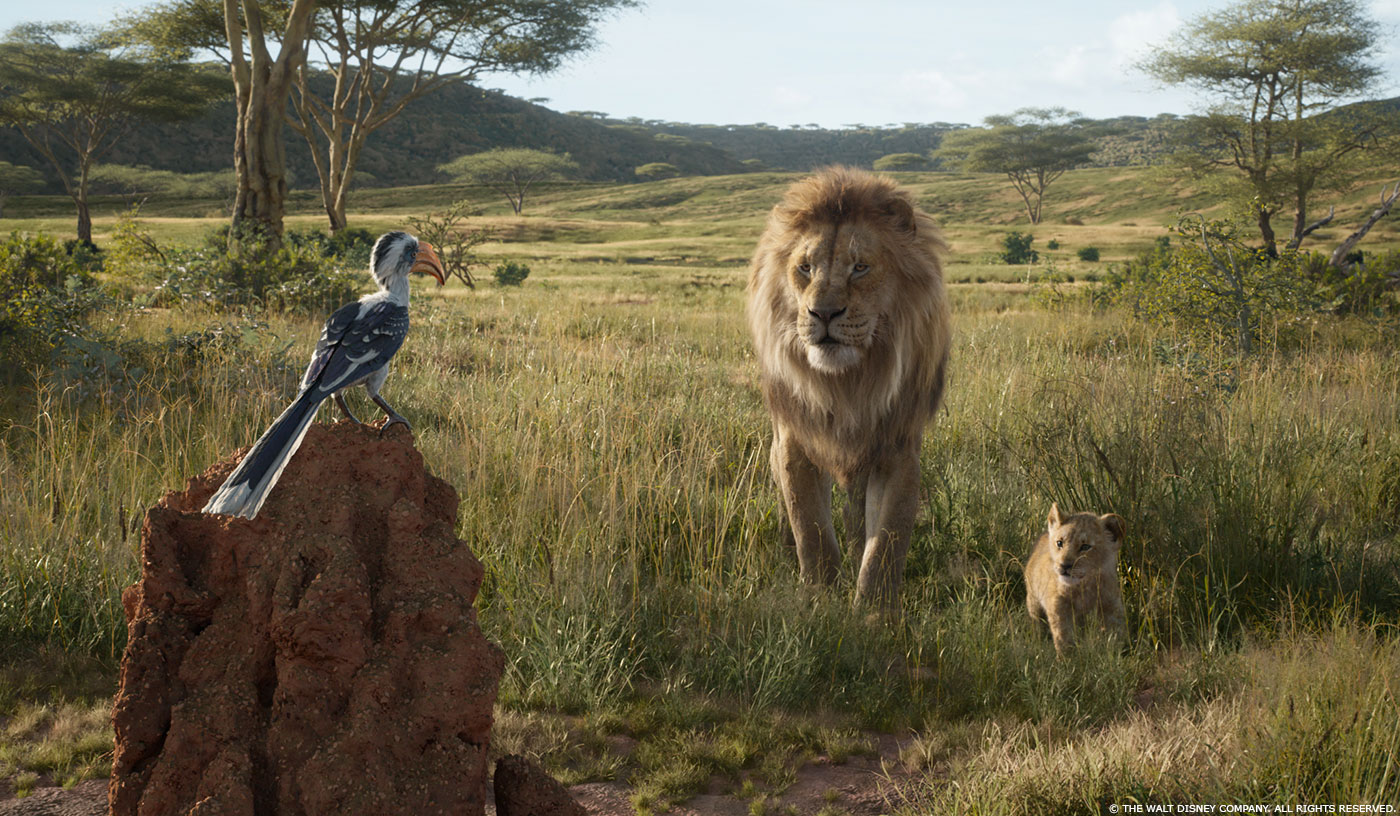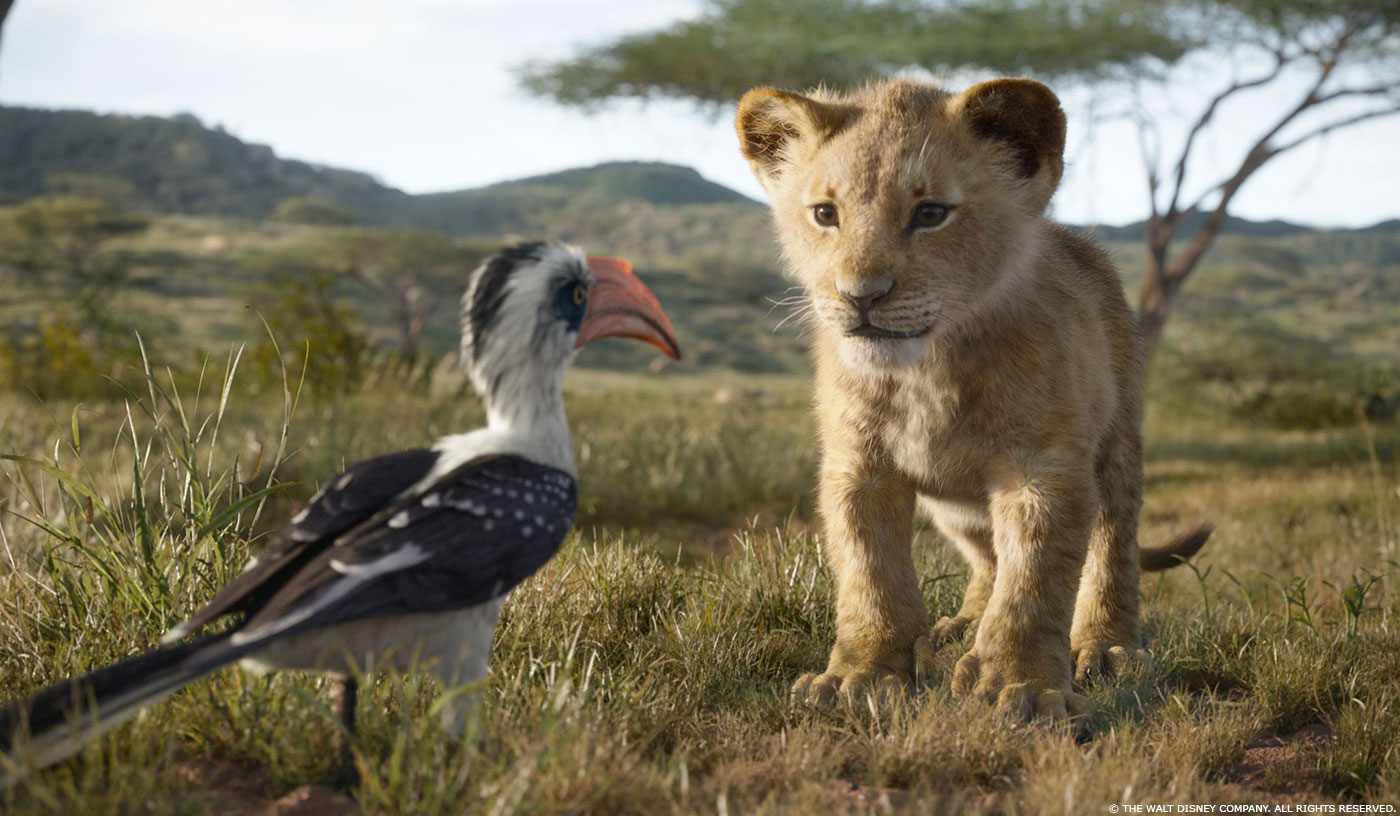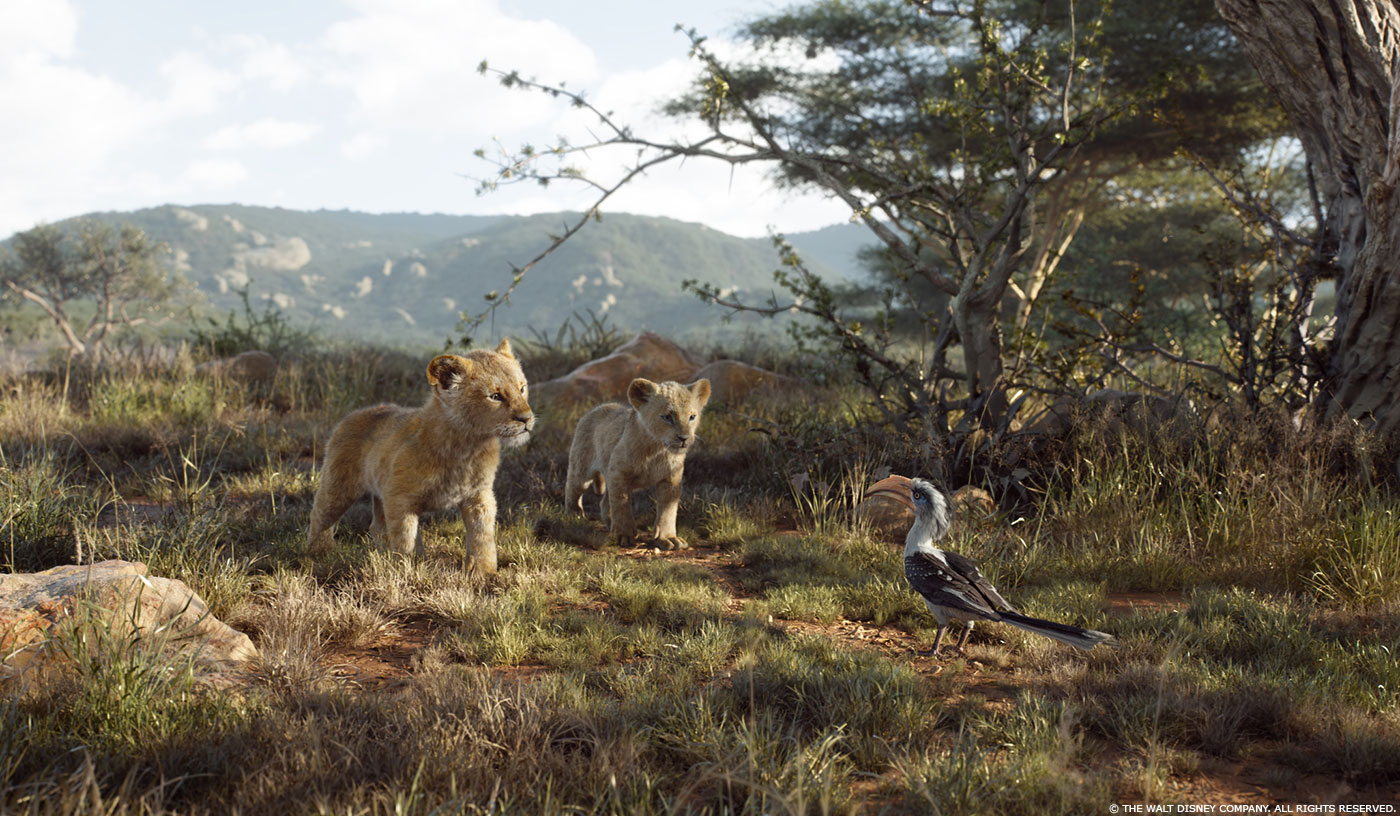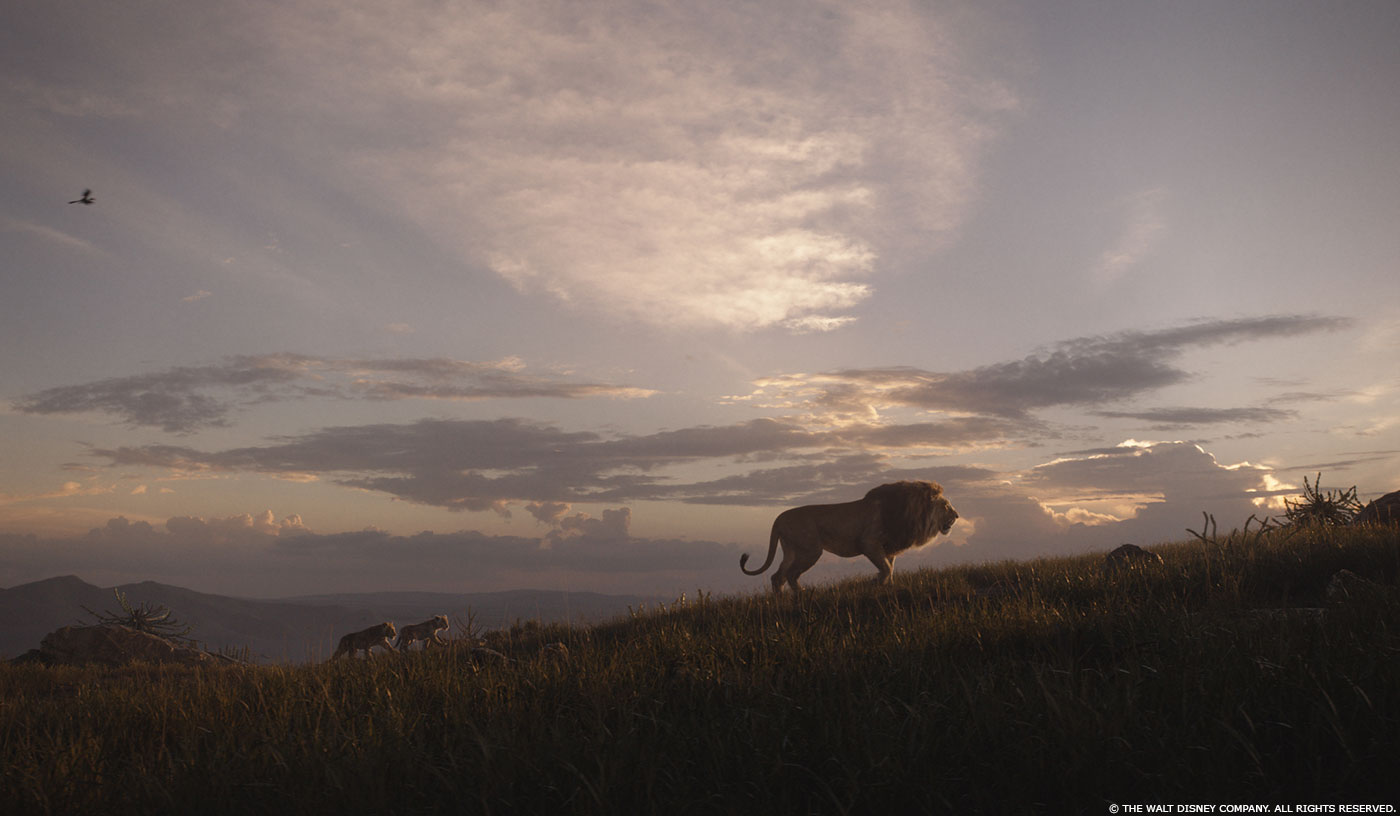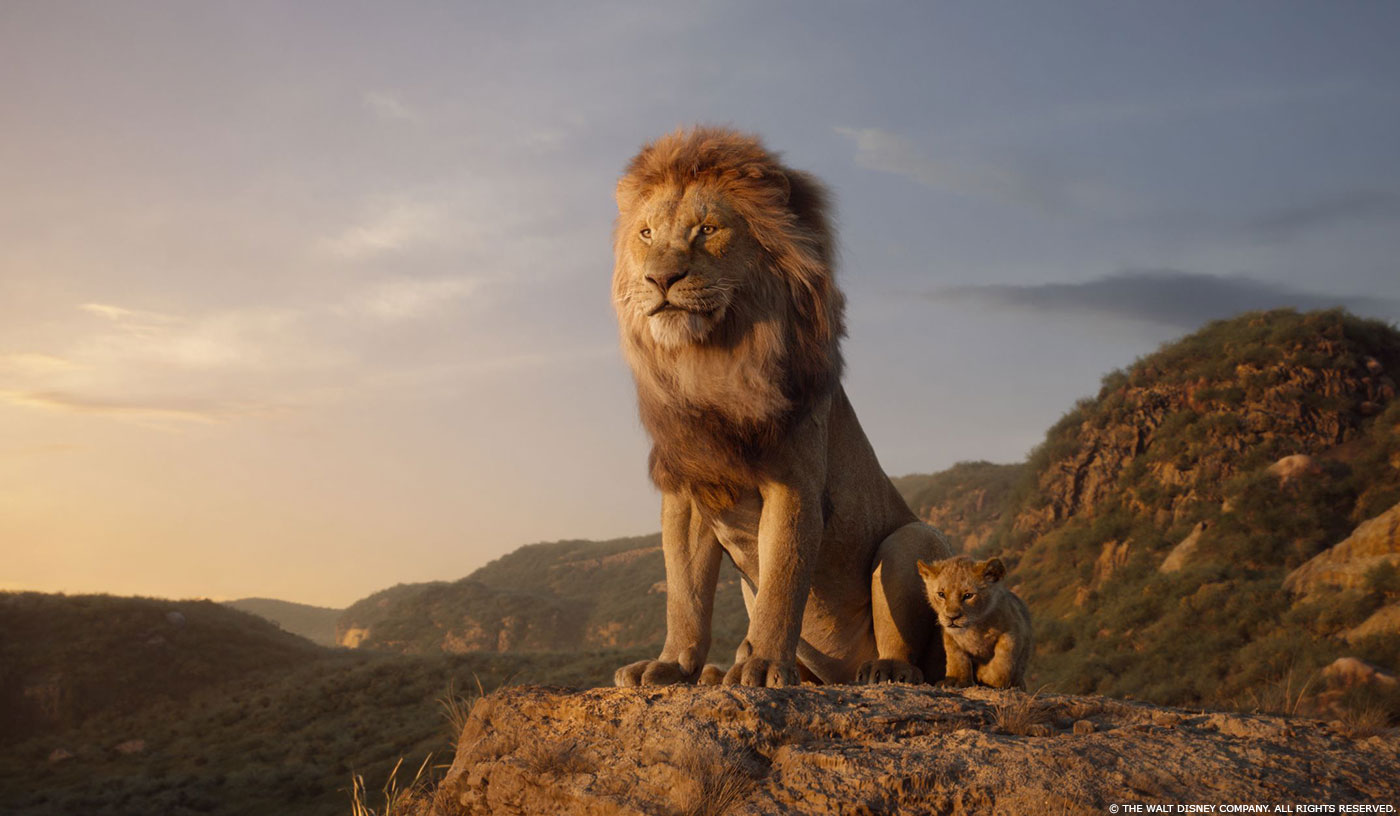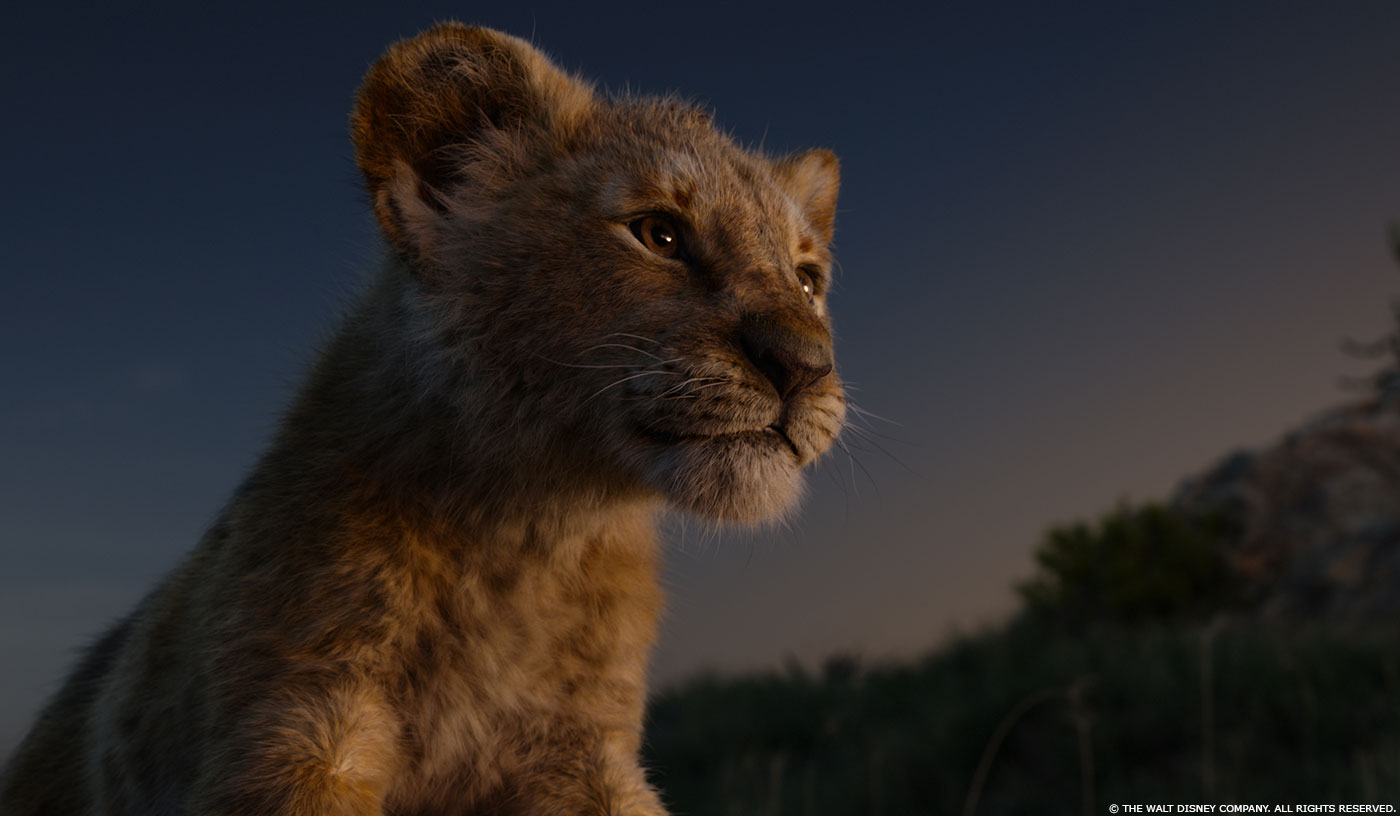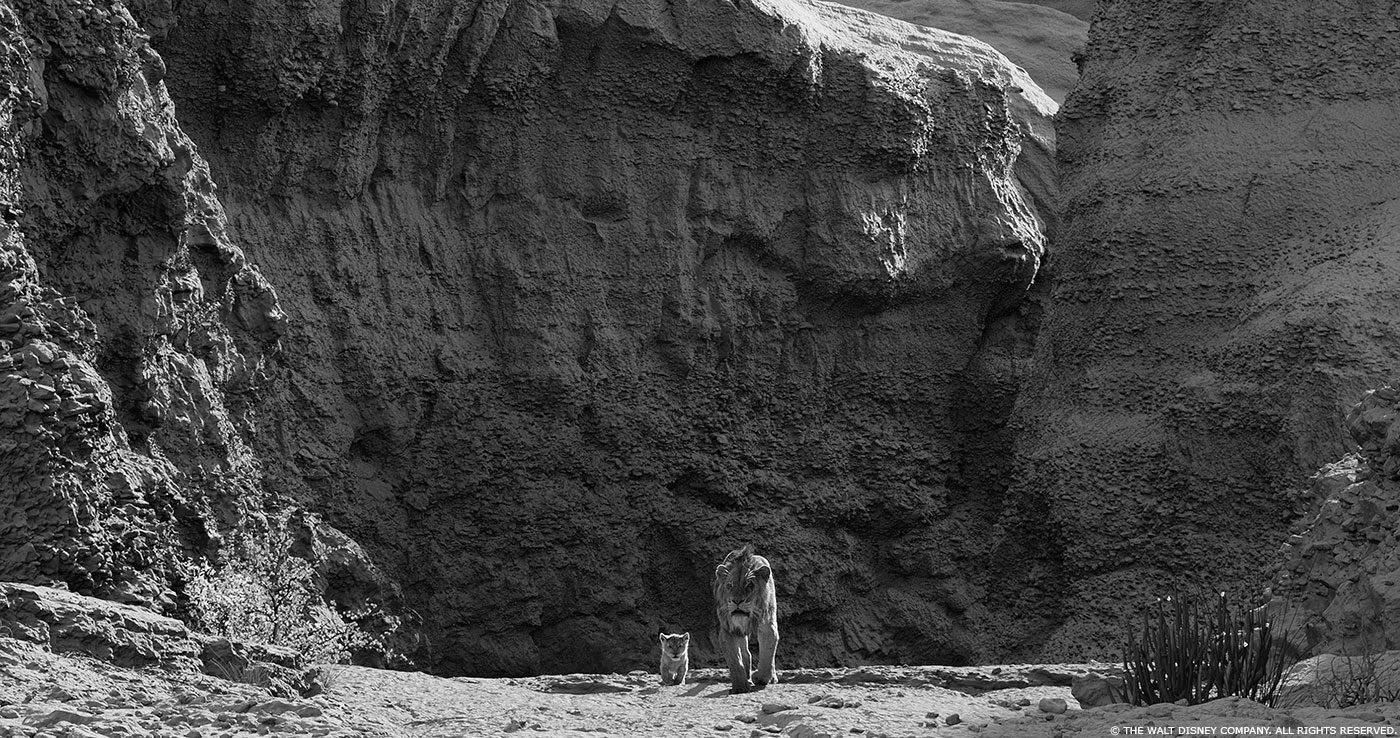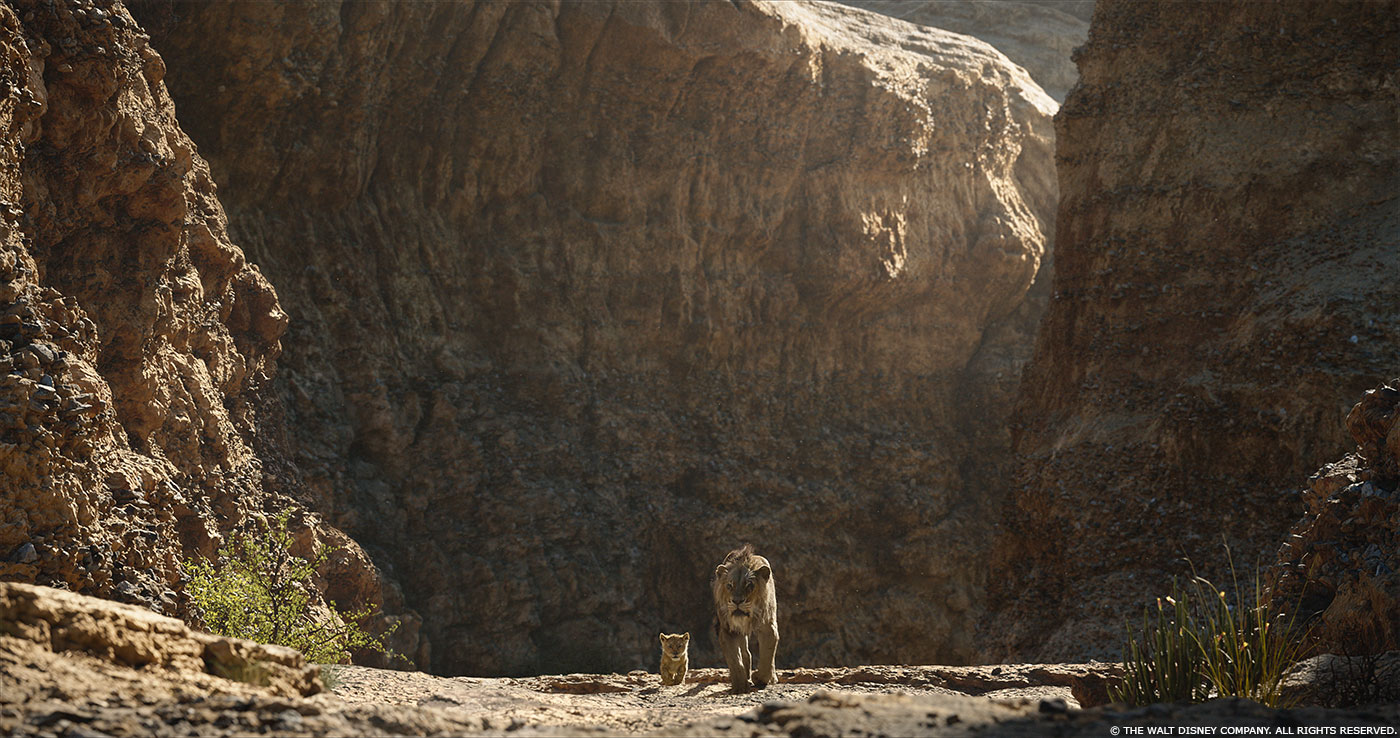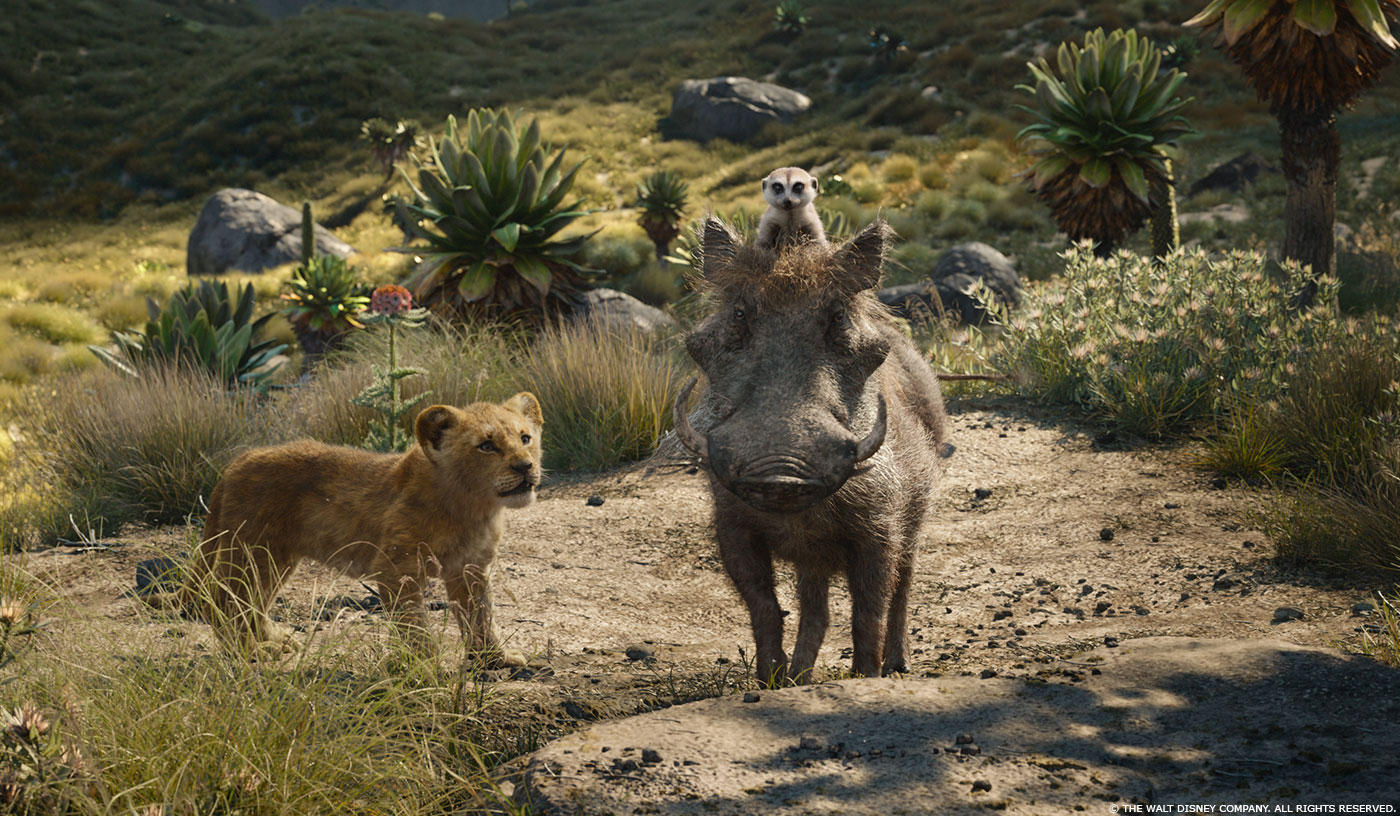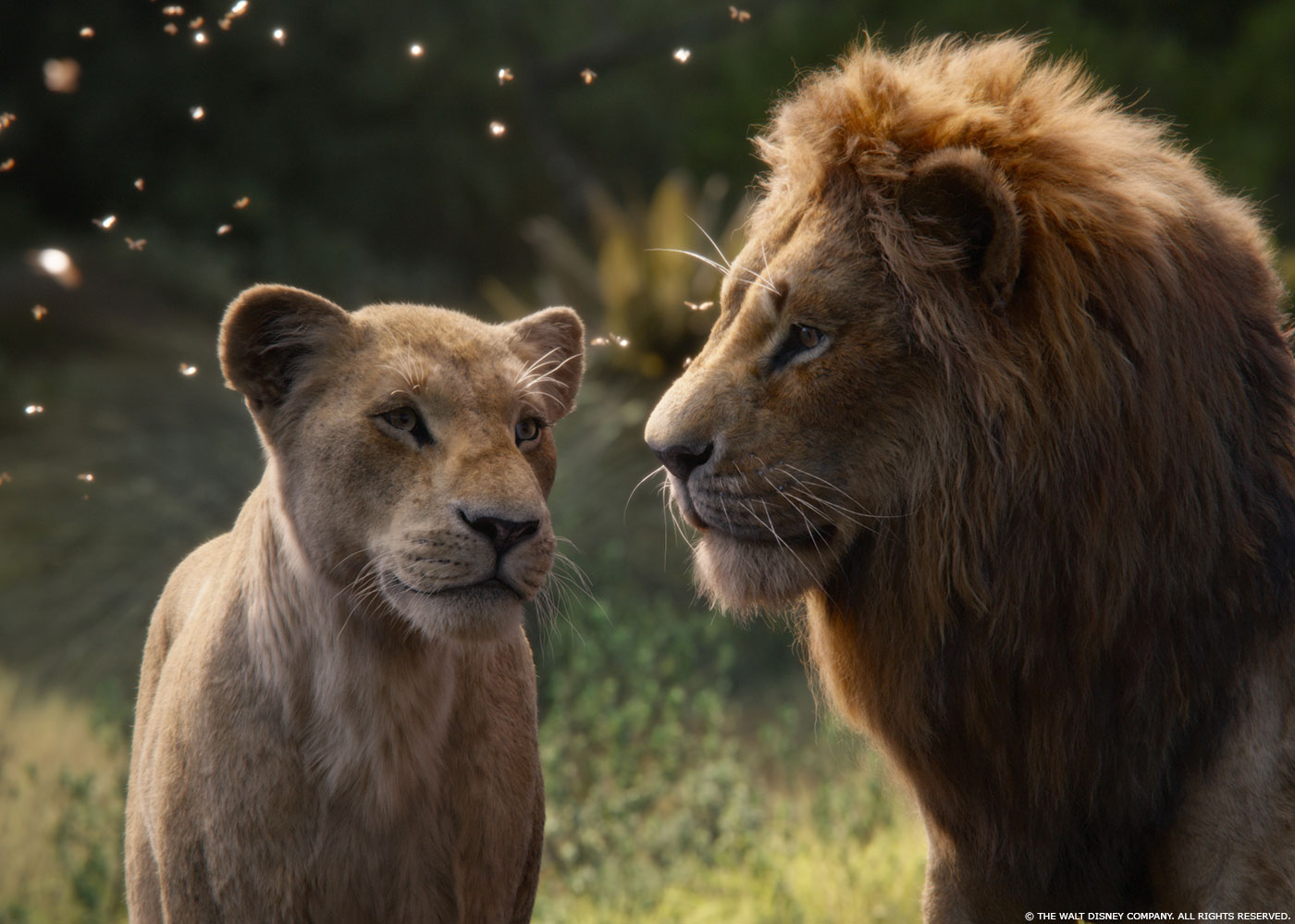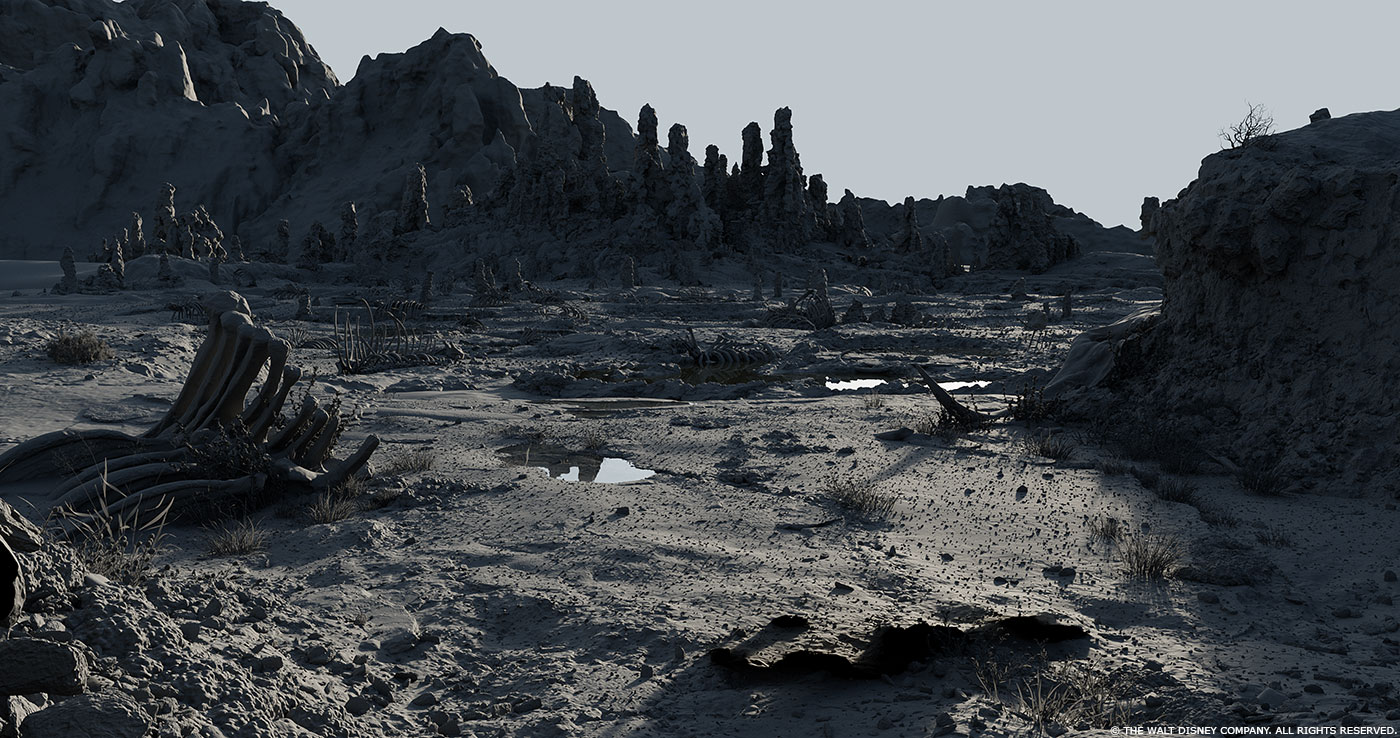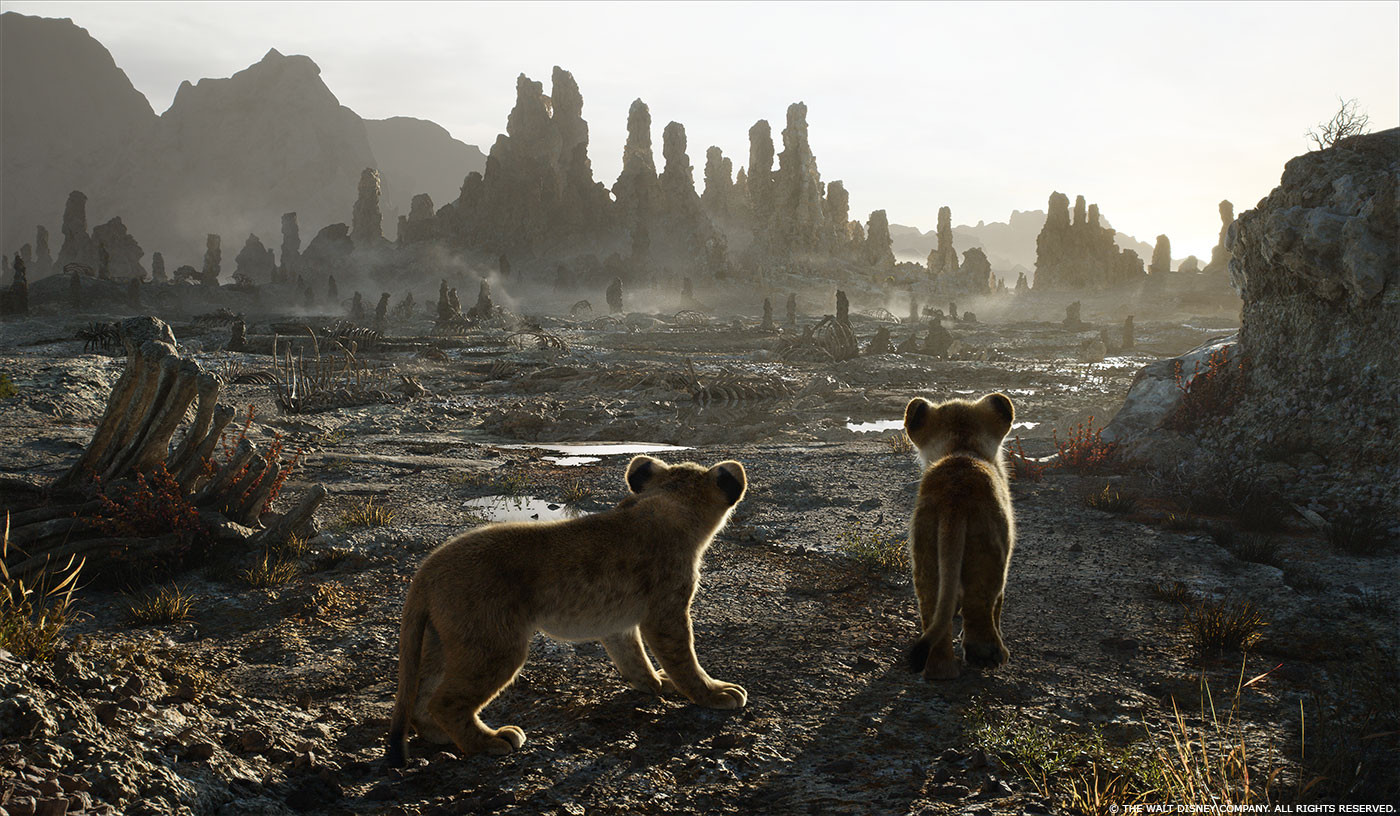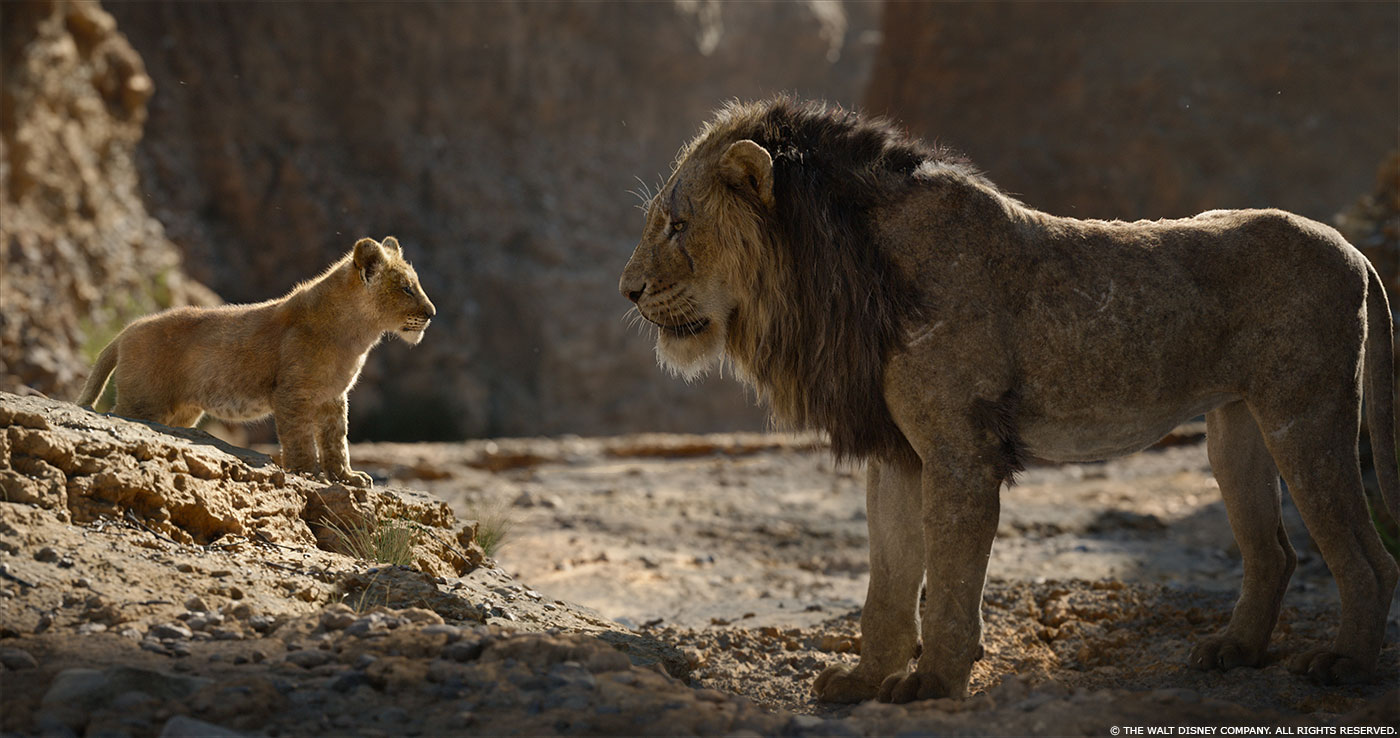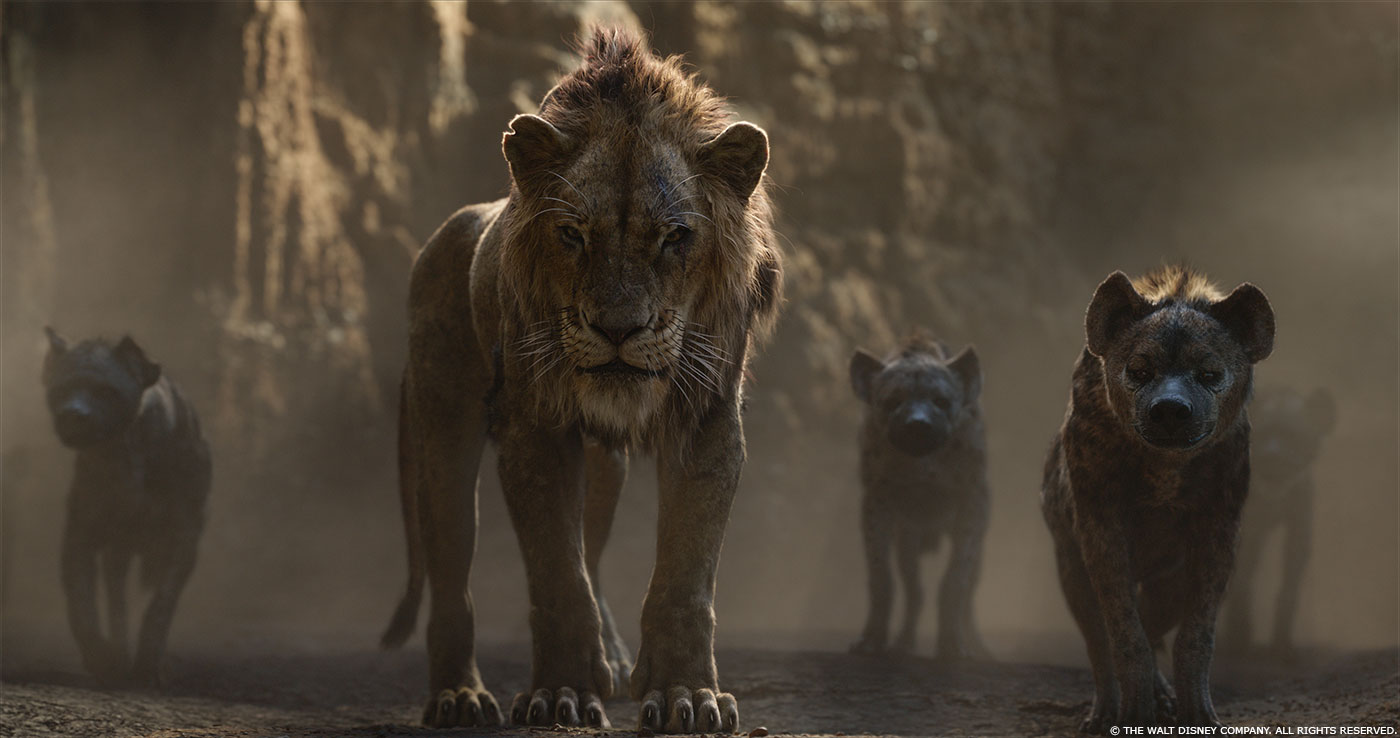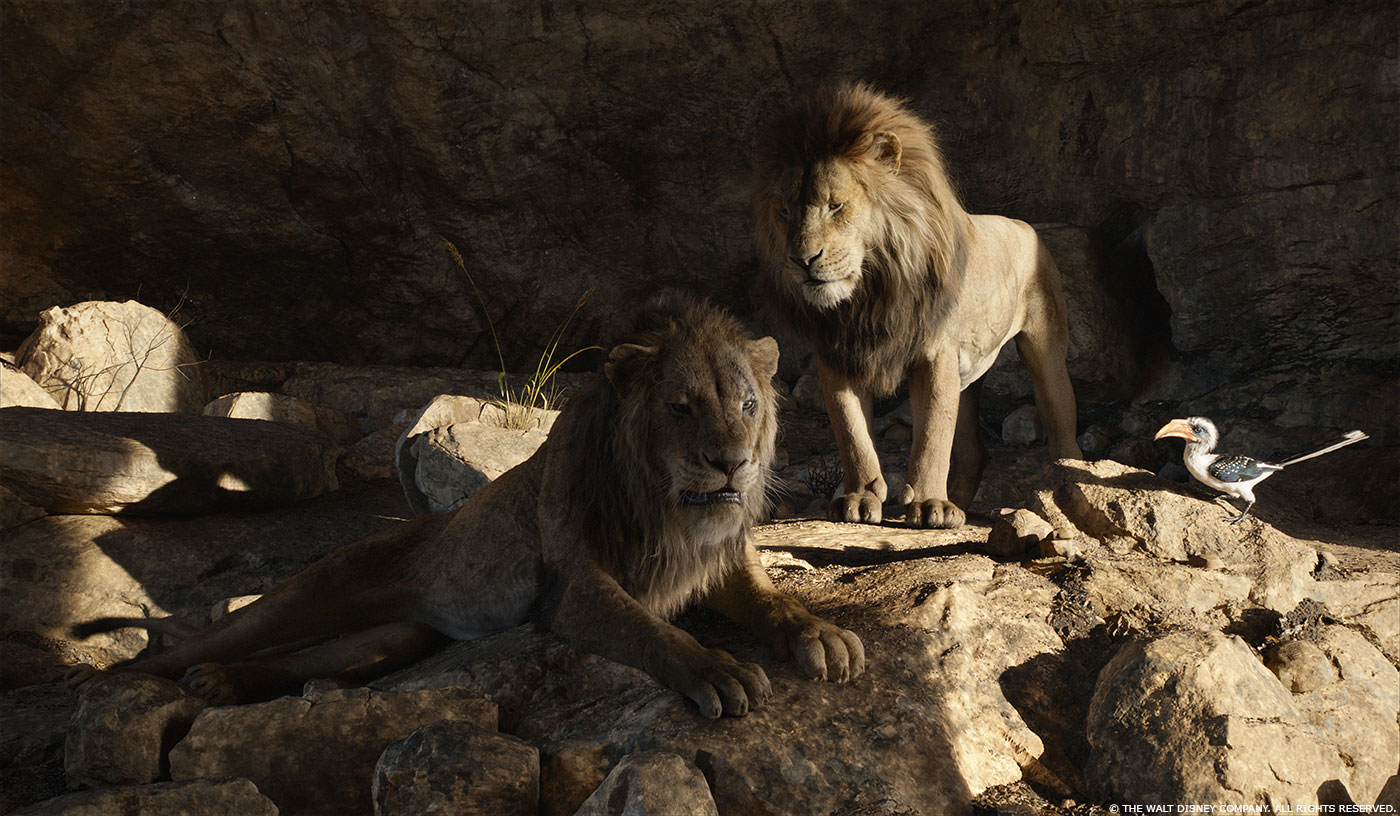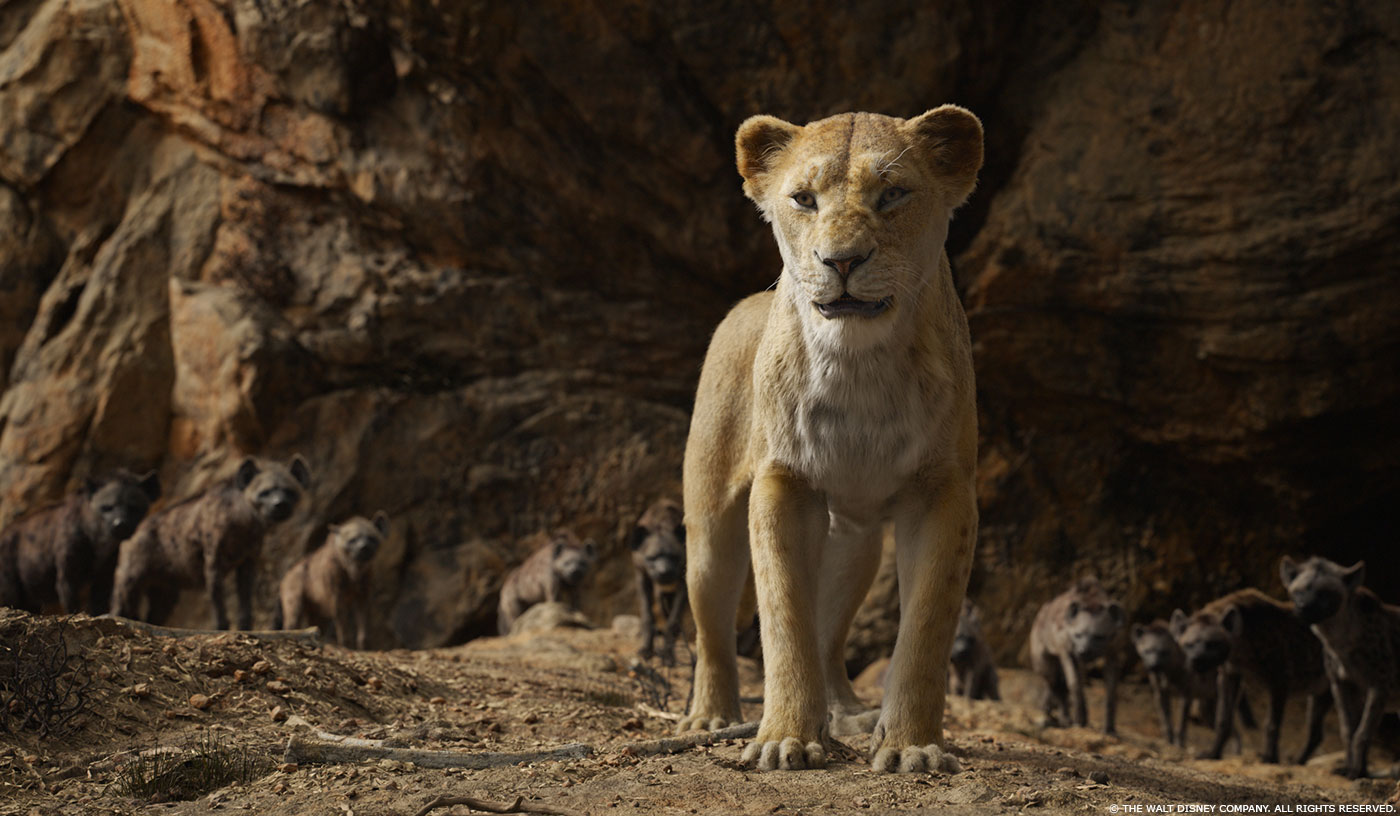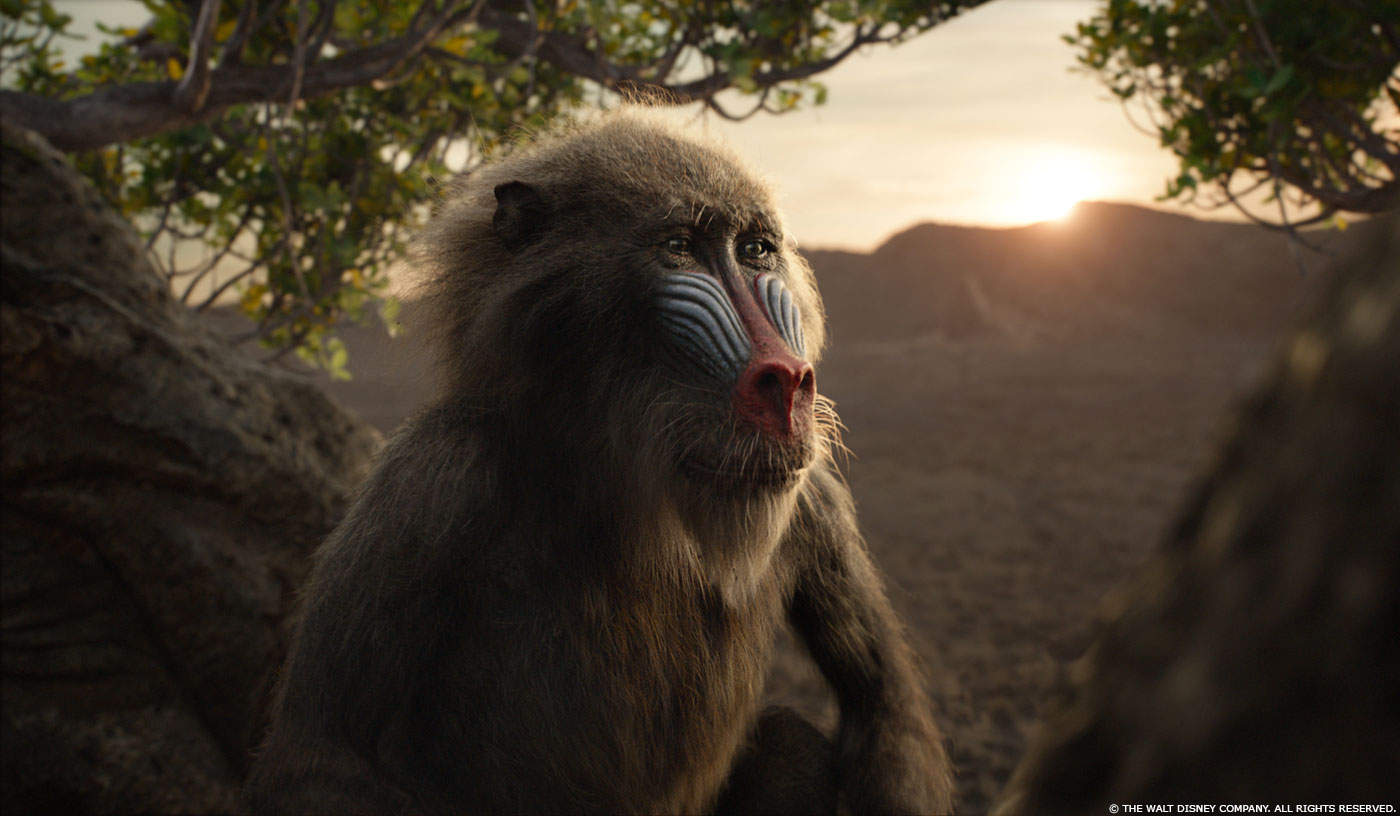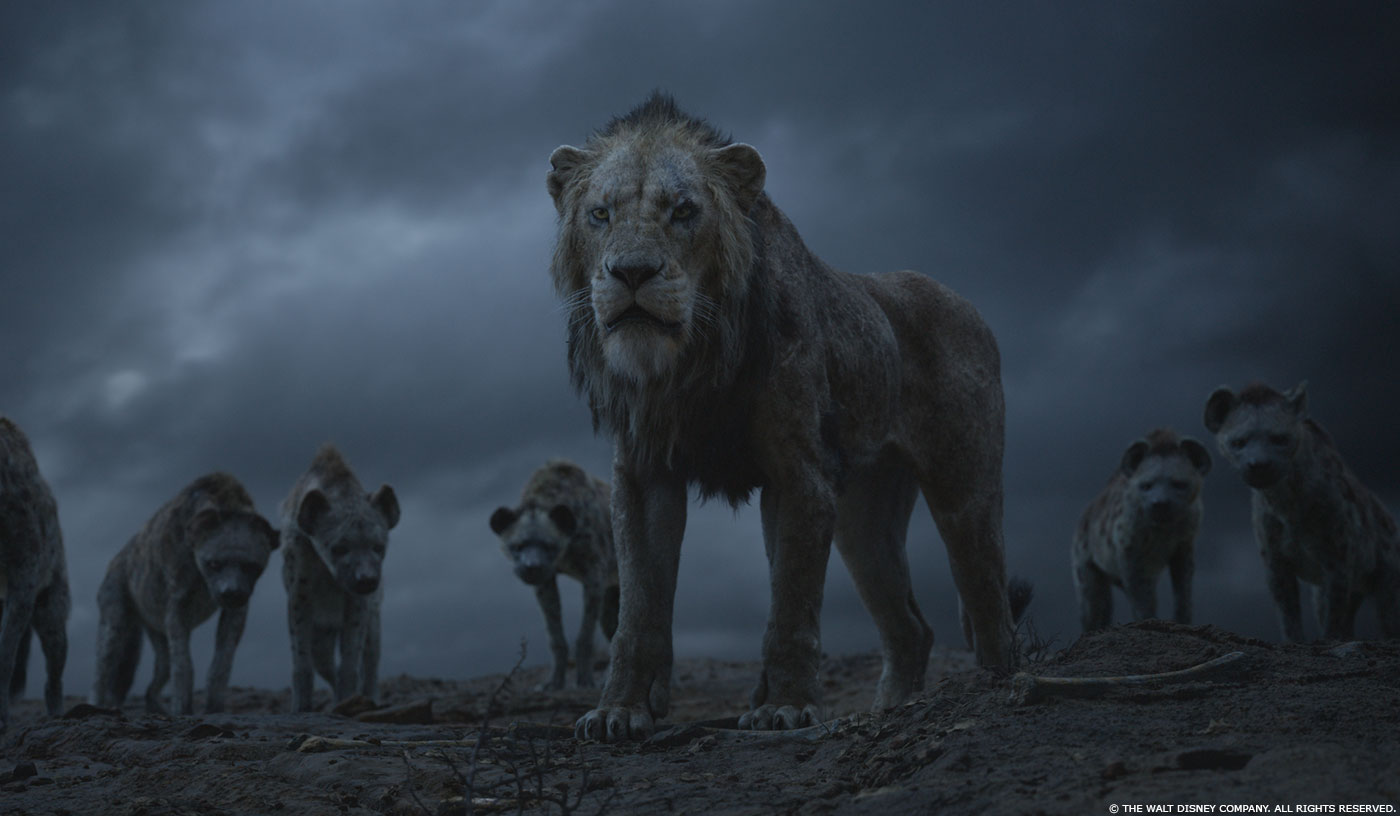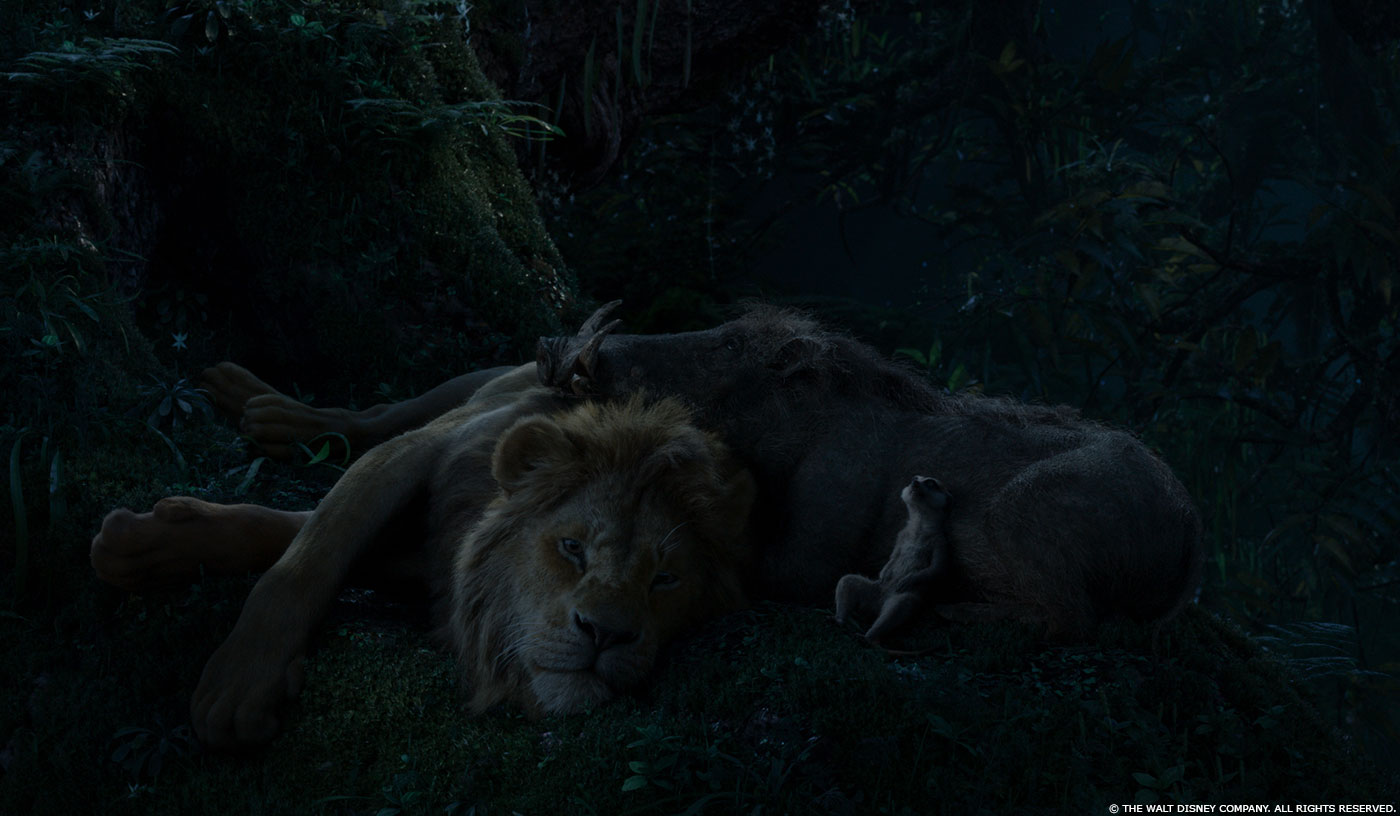Elliot Newman began his career in visual effects in 2002 and joined MPC in 2004. He worked on many films such as PROMETHEUS, WORLD WAR Z, 300: RISE OF AN EMPIRE and THE JUNGLE BOOK.
How was this new collaboration with Director Jon Favreau and VFX Supervisors Rob Legato and Adam Valdez?
It was fun to be back with THE JUNGLE BOOK team again, I think it helped us all having worked together before, as you already have a head start on knowing what is liked, everyone’s sensibilities and it allows you to focus on working on the project straight away and less so on establishing things.
For Adam and I, we’ve worked with each other for over 15 years so not much new there, but Jon and Rob didn’t know me that well, at the start at least.
How did you use your experience of The Jungle Book for this new one?
In many ways, from our approach to the work to how we organised our creative teams, it was largely based around the experiences we had from THE JUNGLE BOOK. It helped that I was a CG Supervisor back then, as I was quite close to the overall making of the work we did, so I was able to take that experience into THE LION KING but from a more overseeing position. We were always looking back on our work and asking ourselves how we’d like to improve something, so early on we knew we wanted to get better at world building, to become better at building trees, at dressing sets, at procedural environment lookdev, fur shading – so as much as the core was the same, most areas since THE JUNGLE BOOK got a decent upgrade both technically from a software point of view but also our artistry was more refined this time around.
What are the main changes and differences since The Jungle Book?
Adopting the Virtual Production workflow was probably the biggest new technique introduced – workflow and technology wise. In terms of comparing the two movies and for the visual effects differences, obviously THE JUNGLE BOOK was still shot with real cameras and we integrated CG into live action plates, THE LION KING was fully CG, so there was no integration work or plate matching – all the hero characters were animated and rendered and all of the environments were built in CG and rendered, so it was a much bigger scale project than anything we had done before.
How did you split the work amongst the MPC offices?
MPC LA took care of the Virtual Production shoot; we had a team of artists right next to the stage, building assets and animating characters to then load into the game engine to shoot. MPC London took care of the bulk of the post production animation, asset builds, world building, simulation work, lighting and compositing and MPC Bangalore took care of a large chunk of asset builds and compositing.
How did you organize the work with your VFX Producer?
We’d regularly catch up throughout the project to discuss progress and agree on certain strategies. At the start, we did quite a lot of work on team structure and how we could best organise ourselves, this would obviously revolve around crewing up and then down towards the end and making sure the work and the teams lined up correctly.
Can you elaborate step by step about the creation of a character?
We started with Disney’s conceptual work to design the characters – this was selected and handed over to MPC to begin the build. We would start with a sculpt using the art and photo reference to find the correct shapes and form. This sculpt was including the fur. Once we got into a good place, we started the actual model, which would form the final skin surface of the character. Before we completely finished, we started groom work and texture painting the groom and we’d also start rigging and shading, so, as the character was being built we could respond to areas that might need improving, otherwise without the context of seeing an assembly of the character it was quite hard to finish any one step. This involved a lot of render tests showing the character with fur, with textures etc. and we’d continue refinements as we went.
Can you tell us more about the rigging and animation?
The animation was crafted entirely by hand, keyframed by our brilliant team of animators. We achieved a new level of detail in terms of the character’s performances, by closely studying thousands of reference clips, which is actually pretty close to the process of most classical 2D features. In a way, we optimized this process to be able to tap into nature’s reference at any point, from previsualisation to shot production. The level of control and detail that MPC rigs provided for our animators was a result of continuously pushing technological boundaries over the years.
James Hood, Lead Artist – Rigging // Throughout the course of the project, our rigging technology continually developed, from the real time virtual production rigs, to the detailed muscle and skin workflow. The animation and rigging teams worked together to build on top of our previous systems, improving the speed and control structure. A lot of time was spent referencing the footage we shot, both in Kenya and Disney’s Animal Kingdom, so we could build rigs that highlighted the animals’ mechanics. This allowed us later, to focus on the subtle nuances which are characteristic of each species, from our hero cast, down to the grubs, such as how they breathe, the way their ears move across the skull, the squash and stretch in each segment of a caterpillar, how a nictitating membrane slides under the eyelids, what happens to the skin and fur as claws retract and even the skin tensing that’s noticeable in herbivores when they graze. New wing flutter systems were developed for the birds, along with complex feather puffing, allowing the animator to enhance emotion, with realistic behaviour observed in nature. The facial team had their own challenges, creating FACS based rigs for over 30 species that could enable full control over the entire face, giving the animation team the ability to produce subtle speech, coupled with realistic snarls and wrinkles. A lot of focus was spent on the eyes and skin surrounding them, the team even brought in veterinary specialists to learn specificity about the structure of the eyes.
Along with this, we developed a new muscle workflow which allowed us to propagate updates and improvements across the vast cast, allowing us more time to focus on the details and quality of the flesh and skin. Our skin sliding set-up is more sophisticated than ever, allowing for complex movement across the entire muscular structure. Our muscle simulation tools were developed to have greater connectivity with its skeleton and each other, producing a more realistic and anatomical result. A particular challenge we had on this project, was creating set-ups that could work for multiple frame rates, slow motion was utilised throughout the film and a lot of time was spent to finesse the movement and silhouettes, from every angle.
What kind of references and indications did you receive for the animation?
We had a lot of video research being done on animal behaviour and had watched a lot of BBC documentaries like PLANET EARTH, but we also had the Kenya shoot, which Andy Jones our Animation Director went on, and he came back with a lot of very useful reference material. MPC also led a team at Animal Kingdom, where we captured video content of the animals in their habitats, from multiple vantage points, allowing for quite good multi view animation reference. Animation built many library clips and shot based animation using this real life reference.
Can you explain in detail about the fur and eyes work?
The fur is something I think we are quite proud of. We worked on improving a lot on our simulation, having the fur actually self-occlude so to create realistic wind movement but also the way it shades, we developed a totally new fur shader for THE LION KING and also developed melanin based colour palettes for artists to paint from, so to keep it as real to nature as possible.
The eyes had been developed much further since THE JUNGLE BOOK – we studied eye anatomy to understand how light travels inside the eye and how the different layers of the eye combine together to form what you see from the outside. Both the fur and the eyes were very complicated to get right.
What were the main challenges with those talking animals?
There are a lot of subtle facial muscle shapes moving when humans talk and emote, so the translation of those onto an animal’s face is quite challenging. The structure of a lion’s face is obviously very different, so it required quite a lot of artistic judgement on what translates well from studying the real actors and how to convey their performances on screen with real looking animals. The animation process was quite time consuming and required a number of iterations with Jon to get the right level of performance and believability.
How did you use the actor’s footage for the face animations?
We had witness camera video recordings shot together during their voice recording sessions, so the animator could see their performance whilst hand animating the character rigs.
Which character was the most complicated to create and why?
Simba (cub) was quite tricky, mainly because he’s in so much of the movie; Simba (baby) also took many rounds to finally lock in the character and design aesthetics. Zazu was challenging as birds are generally hard, with all the feathers, fine feathers on his body and large feathers on his tail and wings, it was a complex setup to build and animate.
Which character was your favorite?
I’m really happy with the way adult Simba and Nala came out, I think they both look really great and work well with Glover and Beyoncé as their voices.
Can you explain in detail about the creation of the various environments?
All the environments were created as full 3D worlds, all the way to the horizon – it’s something we are most proud of because at the start we didn’t know if we could do this, the scale of the worlds in THE LION KING were so much vaster than anything we’d done before. We started building our worlds with a finishing point, then used matte painting to finish the far background but we weren’t happy with the results and the continuity of the blend was tricky and quite restrictive. We had a very big library of trees, plants, rocks and grass, all built to a very good standard. We then used procedural in-house workflows and tools to dress large terrains with these assets and worked on ways to effectively render them without totally killing our renderfarm. The result was that we had full CG worlds, with lighting and shading as if it was a small set with the CG extended, so a faraway tree had all the complexity that would exist in a close up tree, all the additional outputs from the renderer that allowed our compositing team to control the final look and balance.
Then you have the almost fully procedural canyon environment, which was a challenge because no two areas of this set are the same, it’s a very long canyon with quite a specific shape so our ability to just clone sections was reduced. We used procedural scatter and texture workflows to surface and detail the floor and walls of the canyon, defining different layers of strata, the gravel embedded in the rocks, the pitted quality of the crumbling rocks that Mufasa climbs against and the sand simulations on the floor when Simba finds Mufasa at the end. All of these were component 3D assets that we used for dressing and adding in detail.
How did you handle the lighting challenges?
The main challenge for me was how to create something that looks like real location photography, whilst maintaining a style that is sympathetic to the visual storytelling. Rob Legato and Caleb Deschanel played a key part to help define the lighting direction and at MPC we developed techniques in lighting the shots so they looked as legitimately real as possible. We started with very carefully shot HDRIs, shot mainly in Kenya but also in other parts of the world, using capture techniques that allowed us to sample direct intensity values and kelvin values from the sun, but also the overall sky contribution. I think the end result is something quite special, as simulating sun lighting is quite hard on stage, but we didn’t have the same physical limitations in the CG world, so we could stay as true to reality as we wanted, so the size, distance, temperature of the sun are all faithfully simulated in our lighting rigs and is a big part of why the shots feel very physical and real.
We of course didn’t stop there, we would craft our way to the correct visual, we didn’t just position an HDRI and say we are done, we made sure there was a good balance of key to fill, we added dappled shadows, bounce cards, extra lights, blockers, whatever we needed to, in order to satisfy Rob and Caleb’s vision and aesthetics but also to maintain the roots of something that looked more like location photography.
Can you tell us more about the FX work such as the water and fire simulations?
Quote David Schneider, FX Lead: Our FX team used SideFx’s Houdini to produce a wide range of simulations at various scales. At the micro level, the team used Houdini’s grain and rigid body solvers to ensure that characters kick aside sand, pebbles, leaves and twigs as they move through the Pride Lands. At the larger end of the scale, volume simulations created the dust of a Wildebeest stampede and the fire and smoke of the final battle at Pride Rock, while flip fluid simulations were used to generate rivers and waterfalls that feed the lush landscape inhabited by Timon and Pumbaa.
We were fortunate enough to have some of the best Houdini artists in the business working on this project. They brought a huge amount of experience in the configuration of Houdini’s complex solvers to ensure that our fire and water looked photo real. At one point we were asked if we had used 2D fire elements in a particular shot – we hadn’t.
Did you use procedural tools for the environments?
Quote Luca Bonatti, Sets Lead: The Set team developed a new set of procedural tools for the creation of high-resolution natural elements (such as rocks and terrains) and for a dynamic approach to set dressing. Bespoke UV texturing of the individual assets has been almost completely replaced by a more organic approach that considers the set as a whole.
After carefully studying reference images of the African natural environments, the team produced a collection of ecosystems. Each one of them featured a specific collection of assets belonging to a well-defined geographic area (rocks, plants, trees, etc.) and the set of rules which mimic their natural distribution on the terrain.
A wide set of tools for Houdini allowed the artists to load the pre-built ecosystems and automatically generate believable natural scenery that could take into consideration not only the relationship between natural elements, but also the creative needs of the artists working on the shots. The team was able to procedurally increase the detail of soil and rocks, distribute debris mimicking the effects of erosion, grow vegetation in relationship to terrain’s features such as rivers, mountains, etc. This approach also allowed artists to develop exponential layers of complexity by using the output of one iteration as an input for the next. For example we generated vines which grow on the branches of intricate, procedurally generated forests of trees.
The inclusion of procedurally generated geometry was a significant part of the process, and allowed the creation and placement of individual assets, which were blended together at a later stage in a cohesive set. Typical examples were the Canyon and the Pride Rock sets, in which sand was added in interstices and gaps between assets in order to have seamless surfaces, flexibility and natural looks. In the Pride Lands set, hundreds of kilometres of savannah plains have been scattered with billions of instanced grass blades and acacia trees that reach the horizon.
Such a dynamic approach gave the artists the freedom to modify the main landmarks (from trees, to mountains) and see the set dressing automatically readjust itself around them.
Which sequence or shot was the most challenging?
Mufasa cloud was a challenging sequence as it was a very complex simulation but also getting the storytelling and the visuals lined up required us to work in quite an efficient way, so we could iterate ideas with Jon and Adam.
I think probably the single most challenging sequence for our teams was the stampede – it took the most of the duration of the project to finish, as it contained really complex animation, set work, FX simulations, lighting, dust compositing and crowds – just a lot of moving parts and the sequence is really long, so we were pretty happy when we finally finished it!
Is there something specific that gave you some really long nights?
I have to admit, not really. I was so fortunate to never really feel overwhelmed, despite the fact that I could have easily been. I think this is largely due to being surrounded every day by a really talented and experienced team. There may have been a few occasions where I thought “how are we going to do this?” and that maybe stopped me sleeping a bit, but generally there was so much going on each day that I found my mind was well occupied and I didn’t have much time to over think any part of it.
What is your favorite shot or sequence?
I really love a shot in the Mufasa death lie scene, where the wind is blowing through Scar’s mane and he walks down and turns to the right, up the plinth. There’s something so iconic about that shot, but I also really love the wind simulation and the clouds moving behind Scar, it’s a dramatic look that plays really well in that scene. I also really love the shot where poor Simba tucks himself beside his dad, just after the canyon fall and Scar walks into the frame.
What is your best memory on this show?
The crew. Just witnessing the intense passion they had each day, it was a pleasure to be a part of something that meant so much to them all and no matter how demanding I might have been, I never got a sense that anything was a chore – we all just wanted this movie to be as good as it possibly could be.
How long have you worked on this show?
About two and a half years.
What’s the VFX shots count?
1490.
What was the size of your team?
I don’t think I can say 🙂
What is your next project?
Hopefully something cool and exciting, but I don’t know just yet!
A big thanks for your time.
WANT TO KNOW MORE?
MPC: Dedicated page about THE LION KING on MPC website.
© Vincent Frei – The Art of VFX – 2019


